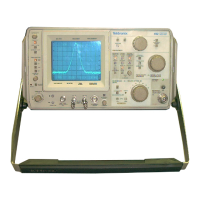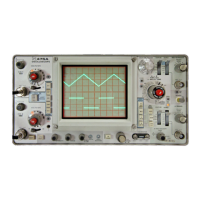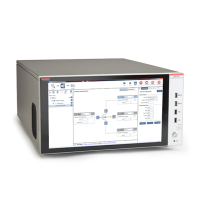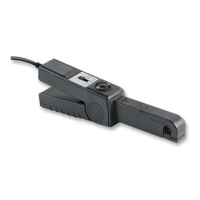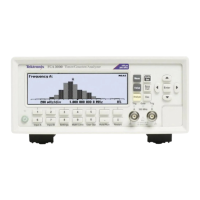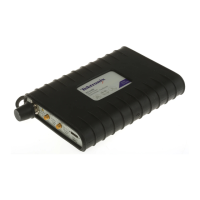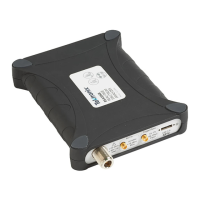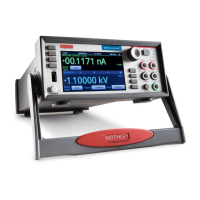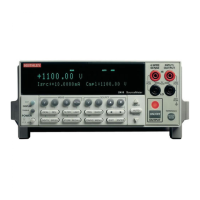Fig. 6-27. Location of C504 and C508.
d. Adjust L444 (wide band amplifier), T464, T454, C435 and
C425 (Fig. 6-24) in the order listed for optimum signal am-
plitude.
e. Adjust L444 for stable 60 MHz oscillator operation.
The stable point is midway between the oscillator dropout
points when the core of L444 is turned in and out through
the operating range. (Remove the P6041 or P6040 cable if
connected and reconnect the cable to J100.)
f. With 200 MHz signal applied to the RF INPUT as de-
scribed in step b, set the DISPERSION to 50 kHz/div, the
RESOLUTION fully clockwise, IF ATTENUTOR for 20 dB, and
adjust the GAIN control for a signal amplitude of 8 divisions.
Center the display with the IF CENTER FREQ controls. Tune
the RF CENTER FREQUENCY if necessary to minimize inter-
ference from converted signals.
g. Connect a test oscilloscope through a
10× probe to
pin B of the honeycomb square pin connector. Adjust the
test oscilloscope sensitivity for a display amplitude of ap-
proximately 6 divisions then adjust the triggering controls for
a stable display. See Fig. 6-25. (Test oscilloscope sweep rate
should be the same as the analyzer sweep rate.)
h. Adjust 100 kHz Resol Cal R543 (Fig. 6-28) so the display
begins to show evidence of over coupling (slight dip in the
center]. Bandpass response on the analyzer display should
decrease to approximately 60 kHz at the -6 dB point when
the RESOLUTION selector is turned counterclockwise one
step from the fully clockwise position.
i. Set, the RESOLUTION selector fully clockwise. Adjust
C504 and C508 (Fig. 6-27) for optimum display symmetry
on the test oscilloscope See Fig. 6-25. Adjust C504 for
the slope of the response and C508 for symmetry. Turn
the RESOLUTION selector counterclockwise one step from
fully clockwise position. Adjust C601, C604, C607 and C610
for optimum display symmetry and amplitude.
Fig. 6-28. location of resolution filter adjustments and 100 kHz
Resolution Cal R543.
j. Check display symmetry through each position of the
RESOLUTION selector. When these adjustments are correct,
display will remain fairly symmetrical through the range of
the selector. Remove the
10× probe and return the RESOLU-
TION selector to the fully clockwise position.
k. Check the Type 491 resolution bandwidth at the -6 dB
point. (This point can be located by switching in the 2
and 4 dB IF ATTENUATOR dB switches and noting the dis-
play amplitude.) Bandwidth must equal or exceed 100 kHz
at the -6 dB point.
1. If the bandpass is less than 100 kHz in step k, adjust
the 100 kHz Resolution Cal R543 (Fig 2-28) to obtain a
bandpass between 100 kHz and 120 kHz at the -6 dB point.
m. Turn the RESOLUTION control one position counter-
clockwise from the fully clockwise position (DISPERSION is
50 kHz.) Readjust the GAIN control for a full 8 division
display and check the bandpass at the -6 dB point. Band-
pass should decrease to approximately 60 kHz.
n. These adjustments interact. When properly set, the
resolution bandwidth should vary from approximately 100
kHz, with the control in the full clockwise position, to 1 kHz
or less with the RESOLUTION control in the fully counter-
clockwise position
kHz/div position,
to approximately
sponse.
As the DISPERSION
the sweep rate must
.2 s/div to maintain
is reduced to the 1
also be decreased
a symmetrical re-
6-25

